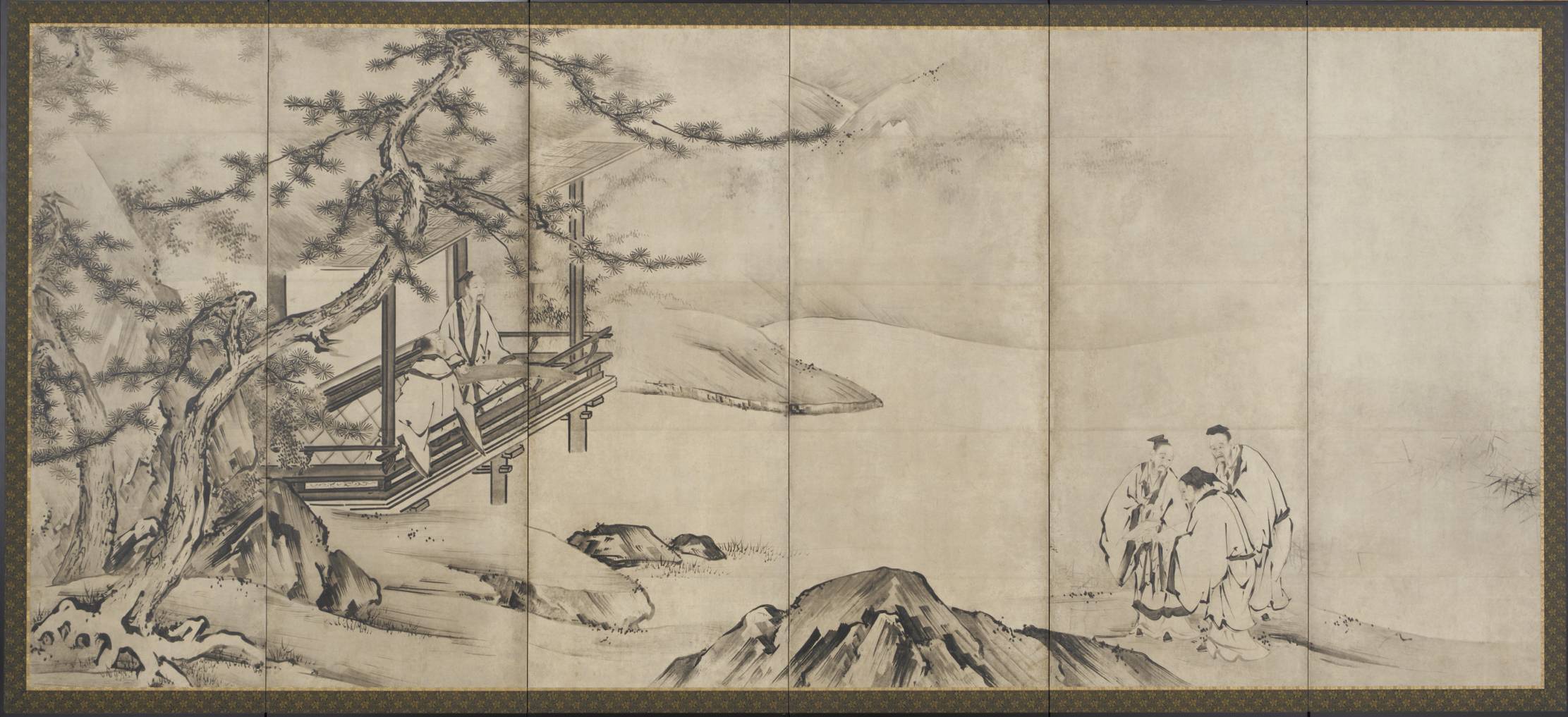Zen Buddhism had a profound impact on the course of Japanese art. It not only transformed architecture, landscaping and interior design, it also provided the aesthetic groundings of the tea ceremony and, crucially, refashioned monochrome ink painting into a major form of artistic expression. Across disciplines, Zen fostered a new spontaneity that reflected a belief that enlightenment could be sudden and unexpected, that it could happen under any circumstances and at any time.
One area in which Zen exerted a particularly strong influence was portraiture. While most Buddhist traditions favored the study of religious texts as the primary means of acquiring knowledge and spiritual insights, Zen stressed a more direct mode of transmission, one that prioritized, among other things, unmediated engagement with a master.
“There is in the arts related to Zen a strong focus on people, on actual role models of the past and of the present,” says Frank Feltens, the associate curator of Japanese art at the Smithsonian’s National Museum of Asian Art in Washington, D.C. “This spiritual and visual contact is crucial and is one reason why there is so much portraiture in this particular tradition.”

















With your current subscription plan you can comment on stories. However, before writing your first comment, please create a display name in the Profile section of your subscriber account page.